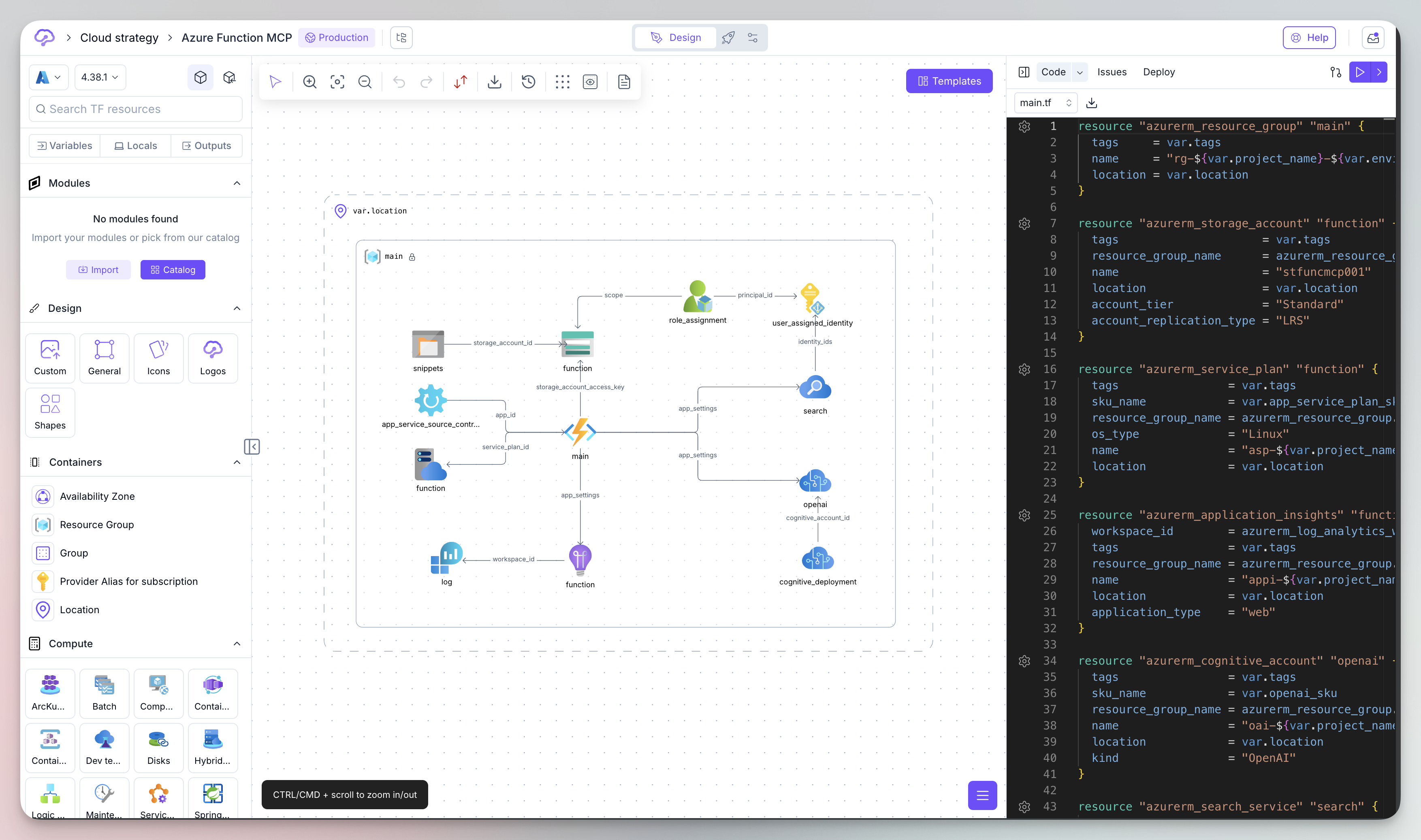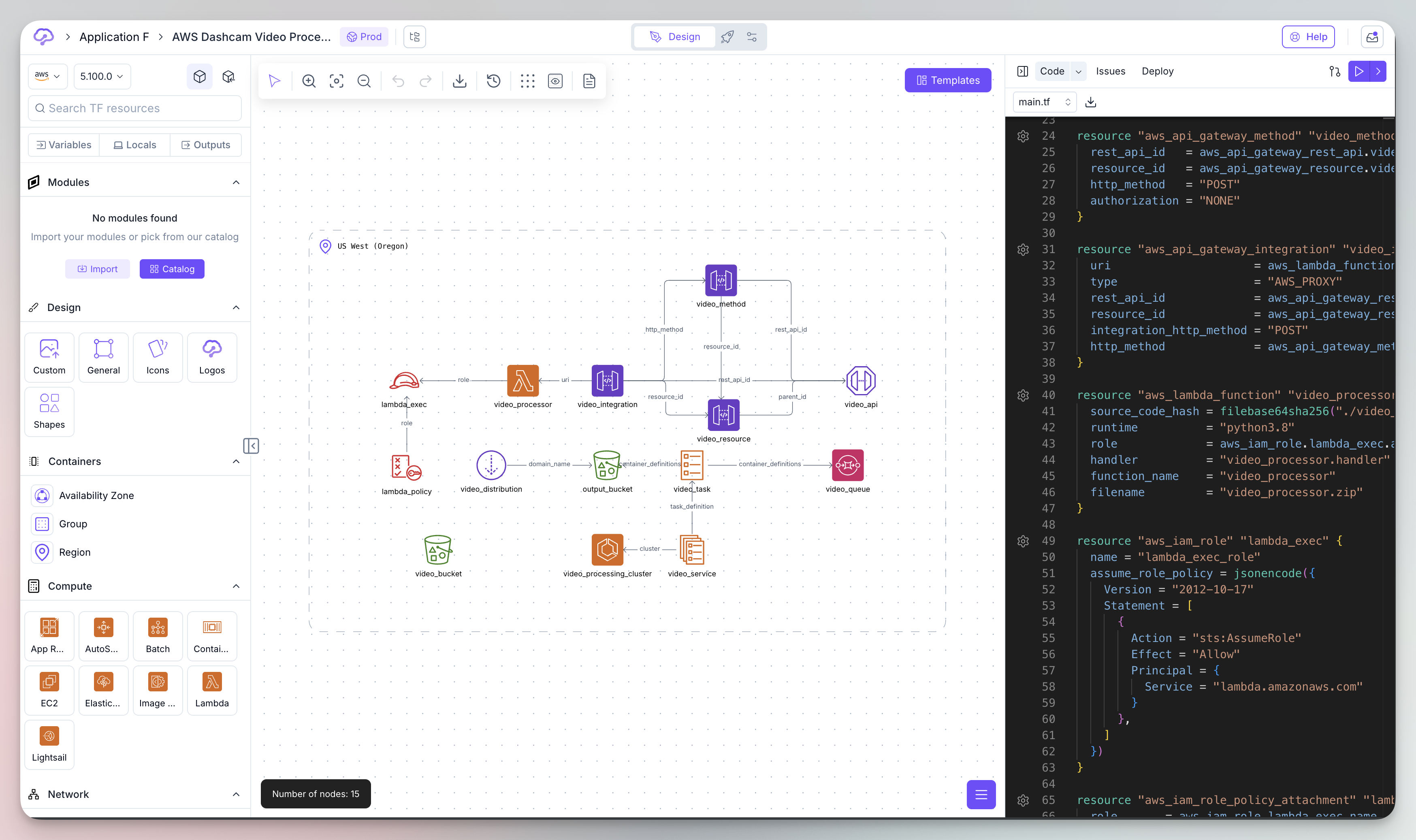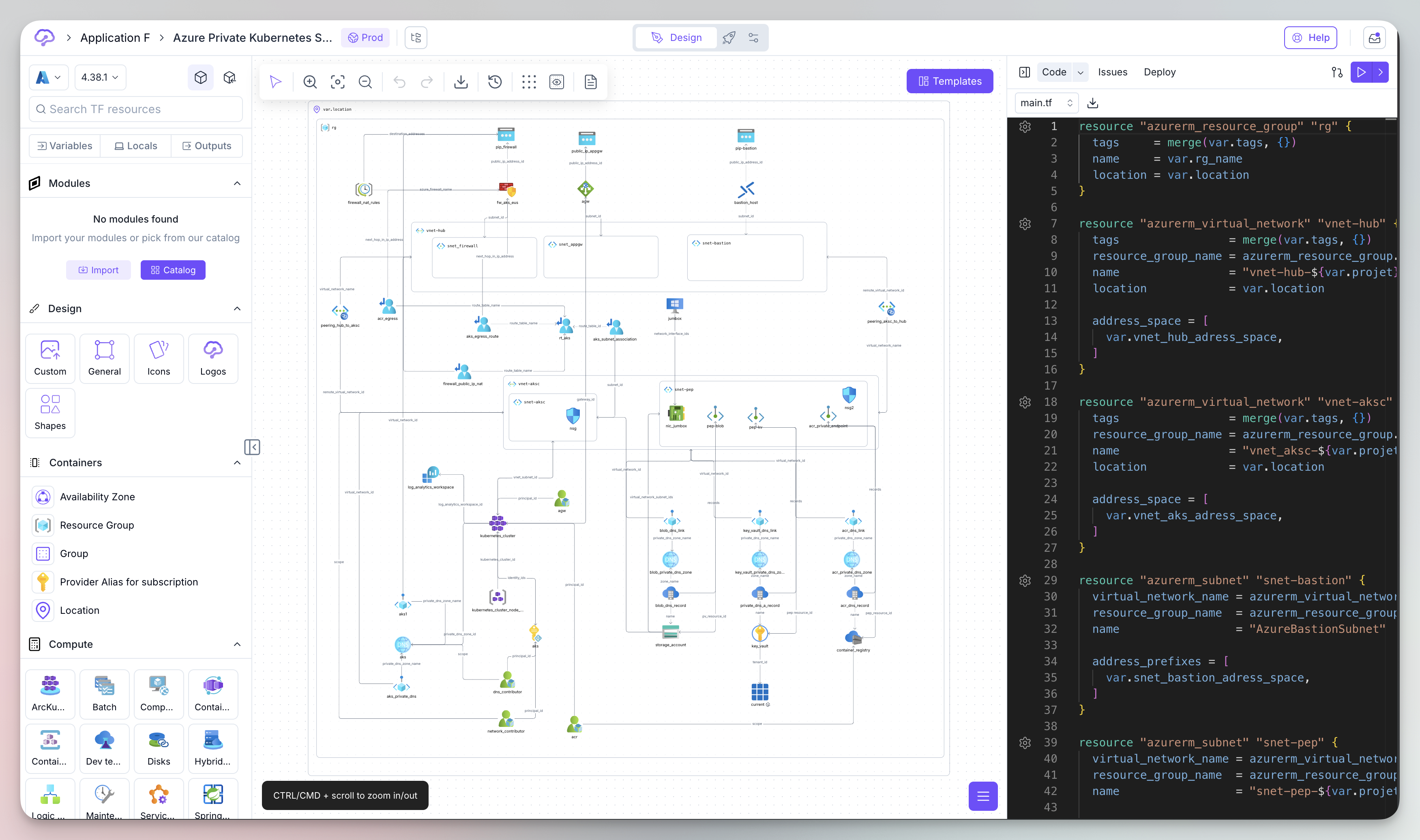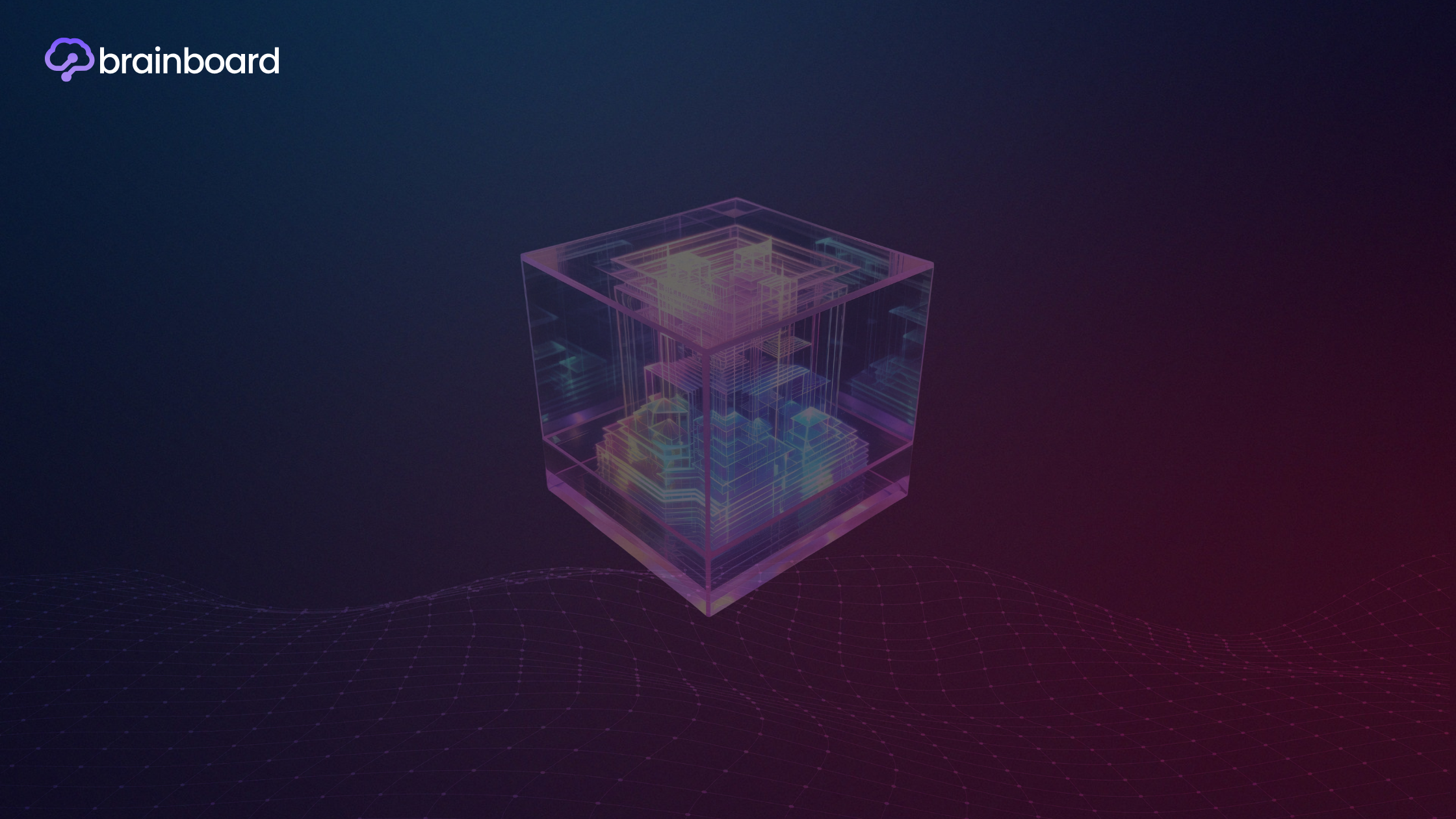The visual revolution in infrastructure as code
Have you ever stared at hundreds of lines of Terraform code, scattered in 20 different files, trying to mentally piece together how all your cloud resources connect? I personally, before building Brainboard, spent countless hours deciphering complex infrastructure configurations, wishing there was a better way to visualize what’s actually being deployed.
The idea is to have intelligent tools capable to understand cloud infrastructure, document it, and translate our designs into real infrastructure or real IaC code that can be used to provision the infrastructure.
This will bridge the gap between code and visual representation, making infrastructure as code (IaC) more accessible to both technical and non-technical stakeholders.
This is exactly what Brainboard is about, we build it from the ground up with the idea of making cloud infrastructure simple and easy for everyone to understand and contribute. Let’s dive into how this AI-driven solution is reshaping the DevOps and Cloud landscapes.
What is an AI Terraform diagrammer?
An AI Terraform diagrammer, like Brainboard, is a sophisticated tool that automatically generates the Terraform code of your visual representations using artificial intelligence and machine learning algorithms. Unlike traditional diagramming tools that require manual input, this intelligent system analyzes your input (prompt or design), understands the relationships between resources, and create comprehensive architectural diagram with a complete Terraform code.
Think of it as having a skilled architect assisting you on building your cloud infrastructure, who can understand your requirements, and sketch out a detailed blueprint with a fully functional Terraform code. The AI component goes beyond simple parsing; it understands context, recognizes patterns, and can even suggest optimizations or highlight potential issues in your infrastructure design. It can even process HCL (HashiCorp Configuration Language) files, state files, and modules to create accurate, real-time visualizations of your cloud infrastructure.


Why traditional infrastructure visualization falls short
Traditional methods of documenting infrastructure have always been a pain point in DevOps workflows. We’ve relied on manually created diagrams that become outdated the moment someone pushes a change to the Terraform code. This disconnect between documentation and reality creates several challenges that impact team productivity and system reliability.
Manual diagramming is time-consuming and prone to human error. When you’re managing dozens or hundreds of cloud resources across multiple environments, keeping visual documentation synchronized with actual infrastructure becomes nearly impossible. Teams often find themselves in situations where the diagram shows one thing, but the deployed infrastructure tells a completely different story. This discrepancy leads to confusion during troubleshooting, onboarding new team members becomes harder, and architectural reviews turn into guessing games.
Moreover, as infrastructure grows more complex with microservices, serverless functions, and multi-cloud deployments, the cognitive load of understanding these systems through code alone becomes overwhelming. Even experienced engineers struggle to quickly grasp the full picture of intricate resource dependencies and data flows just by reading Terraform configurations.
That’s why old diagramming tools or manual code writing keep the gap widening while adding learning curves to engineers.
Key features of AI-powered Terraform diagrammers
Modern AI Terraform diagrammers like Brainboard come packed with features that make them indispensable tools in the DevOps toolkit. The automatic generation capability stands out as the most fundamental feature, whether AI generating the Terraform code from your diagram or analyzing your Terraform files and creates diagrams without any manual intervention. This process happens in seconds, not hours, saving valuable engineering time.
Real-time synchronization ensures your diagrams always reflect the current state of your infrastructure. When you modify your diagram or your Terraform code, the AI automatically updates the code or visualization, maintaining a single source of truth. This dynamic updating eliminates the documentation drift that plagues traditional approaches.
The intelligence layer of Brainboard provides context-aware rendering, where the AI understands not just what resources exist, but their state and how they interact. It can identify security groups, network flows, and dependency chains, representing them in ways that make architectural patterns immediately apparent. It can even offer proactive analysis, highlighting potential bottlenecks or security concerns before they become problems.
Multi-cloud support has become essential as organizations increasingly adopt hybrid cloud strategies. AI diagrammers like Brainboard can seamlessly handle resources across AWS, Azure, Google Cloud Platform, and other providers, presenting them in a unified view that simplifies complex multi-cloud architectures.
Benefits for DevOps teams and organizations
The adoption of AI Terraform diagrammers brings transformative benefits that extend far beyond pretty pictures. For DevOps teams, these tools dramatically accelerate the development and review process. Code reviews become more efficient when reviewers can instantly visualize proposed infrastructure changes instead of mentally parsing through configuration files.
Collaboration improves significantly across different skill levels and departments. When a developer can see how their application connects to databases and load balancers, or when security teams can visualize network boundaries and access patterns, everyone speaks the same visual language. This shared understanding reduces miscommunication and speeds up decision-making processes. Shifting away from reading the code line by line to figure out the impact of the change.
From a business perspective, Brainboard enhances compliance and audit readiness. Regulators and auditors often require infrastructure documentation, and AI-generated diagrams provide accurate, up-to-date representations that satisfy these requirements without manual effort. The cost savings from reduced documentation time and fewer infrastructure misconfigurations can be substantial for large organizations.
Troubleshooting and incident response also see marked improvements. When an issue arises, engineers can quickly identify affected components and their dependencies through visual inspection, reducing Mean Time To Resolution (MTTR). The AI’s ability to highlight anomalies or deviations from best practices adds another layer of operational intelligence.
Popular AI Terraform diagrammer tools
The market offers few compelling options for teams looking to implement AI-powered Terraform diagrammer. Inframap for example is an open-source solution that generates interactive diagrams from Terraform state files, offering a cost-effective entry point for teams exploring this technology. Its ability to read directly from state files means it shows actual deployed resources, not just planned configurations.
Pluralith is another tool, offering both CLI tools and CI/CD integrations. Their AI engine can create detailed diagrams that include cost information and security insights, making it valuable for FinOps and SecOps teams.
Brainboard takes a different approach by combining diagramming with a complete Terraform management platform. Their AI not only visualizes existing infrastructure but also allows teams to design visually and generate Terraform code from diagrams, creating a bidirectional workflow that appeals to teams preferring visual-first development.

Implementation best practices
Integration with existing workflows is crucial for adoption. The diagrammer should fit seamlessly into your CI/CD pipeline, with the possibility to push the generated code and diagram into your git repository or automatically generating updated visualizations with each infrastructure change. Configure webhooks or automated triggers that ensure diagrams remain synchronized with your Terraform repositories. This automation prevents the tool from becoming another manual step that teams might skip.
Standardization of Terraform code structure is another area where Brainboard can help to improve your IaC management. Consistent naming conventions, proper use of modules, and clear resource tagging help the AI better understand your infrastructure’s purpose and relationships. Consider establishing team guidelines that optimize the diagram and code for both human and AI readability.
Access control and security considerations shouldn’t be overlooked. Since Brainboard may interact with your Git or cloud providers, ensure proper authentication and authorization mechanisms are in place. Some teams prefer running Brainboard in isolated environments or using read-only credentials to minimize security risks.
Future trends in AI-powered infrastructure visualization
The future of AI Terraform diagrammers looks incredibly promising as artificial intelligence capabilities continue to advance. We’re seeing early adoption of natural language interfaces where engineers can query their infrastructure using conversational AI, asking questions like “Show me all resources that can access the production database” and receiving instant visual responses.
Predictive analytics and anomaly detection are becoming more sophisticated. Future versions will likely predict infrastructure failures, suggest optimizations, and automatically identify security vulnerabilities based on visual pattern recognition. The AI will learn from millions of infrastructure deployments to provide increasingly accurate recommendations.
Integration with augmented reality (AR) and virtual reality (VR) technologies is on the horizon. Imagine walking through your infrastructure in a 3D space, visualizing data flows and resource utilizations in real-time. While this might seem futuristic, several companies are already prototyping AR-based infrastructure visualization tools.
The convergence of AI diagrammers with GitOps practices will create self-documenting infrastructure where visual documentation becomes a first-class citizen in the development process. Pull requests will automatically include visual diffs, making infrastructure changes more transparent and reviewable.
Conclusion
AI-powered Terraform diagrammers represent a significant leap forward in how we design and manage cloud infrastructure with IaC. They solve long-standing pain points around documentation, collaboration, and infrastructure comprehension while introducing new possibilities for optimization and security. As these tools continue to evolve, they’re becoming essential components of modern DevOps practices.
The journey from manually writing code or designing diagrams to AI-generated code/visualizations marks a crucial evolution in infrastructure management. Organizations that embrace these tools gain competitive advantages through improved efficiency, better communication, and reduced operational risks. While challenges exist, the benefits far outweigh the limitations for most teams.
As we look toward the future, the integration of AI in infrastructure visualization will only deepen. What Brainboard offers today is just the beginning of what’s possible when we combine artificial intelligence with infrastructure as code. For DevOps teams ready to modernize their practices, adopting tools like Brainboard isn’t just an option — it’s becoming a necessity.
FAQs
How does an AI Terraform diagrammer differ from traditional diagramming tools?
AI Terraform diagrammers automatically generate code from design or diagrams from your infrastructure code, eliminating manual code writing or drawing and updates. They understand context and relationships between resources, provide real-time synchronization with code changes, and can identify patterns or issues that might not be obvious to human reviewers. Traditional tools require manual input and maintenance, making them prone to becoming outdated.
Can AI Terraform diagrammers work with existing Terraform projects?
Yes, most AI Terraform diagrammers, like Brainboard, are designed to work with existing projects without requiring code modifications. They can read your current Terraform files, state files, and modules to generate visualizations immediately. Some tools might recommend organizational improvements for better diagram clarity, but these are typically optional enhancements rather than requirements.
How accurate are AI-generated infrastructure code or diagrams?
The accuracy of AI-generated code or diagrams typically ranges from 95-99% for well-structured requirements. Factors affecting accuracy include code complexity, use of dynamic resources, third-party modules, and the specific AI tool’s capabilities. Most tools allow manual adjustments for edge cases, and accuracy continues to improve as AI models are trained on more diverse infrastructure patterns.
What’s the typical ROI of implementing an AI Terraform diagrammer?
Organizations typically see ROI within 2-3 months through reduced documentation time (saving 10-20 hours monthly), faster onboarding (cutting training time by 30-50%), improved incident response (reducing MTTR by 20-40%), and fewer configuration errors. The exact ROI depends on team size, infrastructure complexity, but most teams report significant time savings and quality improvements.

